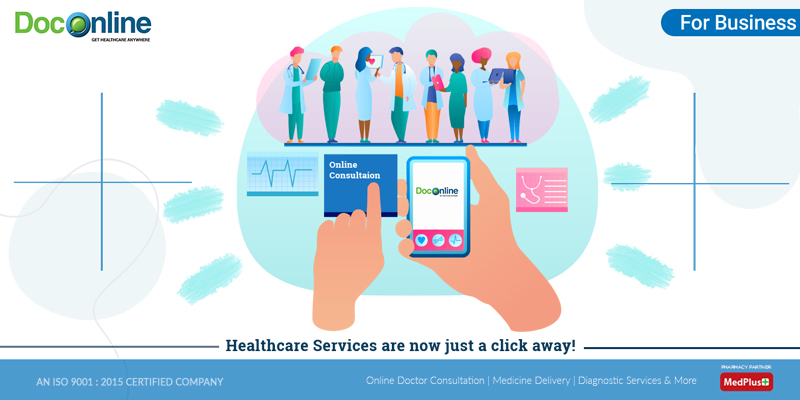The Surge of Subscription-Based Medical Care and Its Influence On Patient Care
As medical care evolves, the subscription-based design is getting grip, promising to revolutionize client treatment by offering predictability and ease of access. These models, which bypass standard insurance coverage, can redefine the patient-doctor dynamic, highlighting preventive and individualized care. Yet, just like any innovation, they present obstacles, specifically worrying fair accessibility for all socioeconomic groups. The possibility for these designs to reshape healthcare delivery raises pressing concerns concerning their long-lasting sustainability and inclusivity. Are these registration solutions the future of healthcare, or do they run the risk of leaving susceptible populations behind? The details of this change warrant a closer examination.
Recognizing Registration Medical Care Models
Understanding the principle of registration medical care models entails taking a look at a transformative approach to medical solutions that emphasizes cost and ease of access. These versions, commonly referred to as straight medical care (DPC) or concierge medication, have actually arised as cutting-edge alternatives to typical fee-for-service health care systems. Registration healthcare enables people to pay a set monthly or yearly fee for a specified collection of clinical solutions, which may include endless workplace gos to, regular exams, and basic lab tests, without the need for standard insurance billing.
The framework of membership medical care versions is created to simplify patient care by removing third-party payers and complicated invoicing codes, consequently lowering administrative burdens. Doctor can focus a lot more on person care, promoting stronger patient-provider relationships. This model also promotes preventative care by encouraging regular check outs, as the financial obstacle of per-visit costs is gotten rid of.
The registration version usually encourages doctor to take care of smaller patient panels, permitting for even more individualized care. It lines up monetary incentives with patient health results, as companies are inspired to maintain client fulfillment and wellness. In general, recognizing subscription medical care versions requires recognizing their prospective to reshape just how care is delivered and accessed.
Advantages for Individuals and Companies

For companies, subscription-based designs offer the opportunity to deepen patient-provider connections. With a stable revenue stream, healthcare professionals can commit even more time per person, resulting in a much more comprehensive and individualized care experience. This design also decreases reliance over patient volumes, alleviating burnout and boosting work satisfaction. Furthermore, the emphasis on precautionary care within registration plans can cause much better client results and decreased long-term medical care prices. By focusing on continuous care, companies can deal with issues before they rise, inevitably profiting the health care system overall by reducing the worry on emergency situation and acute treatment services.
Issues and difficulties
While subscription-based health care versions present various advantages, they likewise feature a set of obstacles and issues that need to be addressed. First, accessibility continues to be a significant concern, as these designs usually target individuals who can manage monthly fees, potentially excluding low-income populations. This increases ethical questions about fair accessibility to medical care solutions. Additionally, the varied nature of membership plans can bring about complication amongst people pertaining to coverage specifics, possibly resulting in unmet assumptions or insufficient treatment.
Financial sustainability of subscription-based designs is an additional problem. Providers must stabilize the set income from registrations with the variable costs of medical care solutions, which may vary due to unforeseen medical requirements. This can create stress to restrict services or rise charges, potentially influencing person contentment and care top quality.
Moreover, regulative oversight of subscription-based medical care designs is still developing. The lack of standard frameworks can bring about inconsistent service high quality and responsibility, complicating efforts to guarantee person security. Lastly, the assimilation of innovation-- frequently a cornerstone of these designs-- increases questions concerning information privacy and protection, as sensitive individual information browse this site might be susceptible to violations. Attending to these obstacles is essential for the fair and successful implementation of subscription-based health care.
Influence on Patient-Doctor Relationships
One considerable impact of subscription-based medical care models on patient-doctor partnerships is the possibility for boosted continuity and individualized treatment. By embracing a membership version, doctors can manage a smaller person panel, enabling more specialized time with each individual. This raised schedule promotes a deeper understanding of a patient's case history, lifestyle, and choices, allowing extra customized treatment strategies and treatments.

Nonetheless, it is important to recognize that while subscription-based versions may profit those who can manage them, they could accidentally expand health care variations. People who are not able to get involved in these designs may experience decreased accessibility to personalized treatment, possibly affecting their relationships with healthcare providers. Hence, while the registration version supplies encouraging advantages for patient-doctor partnerships, it additionally postures difficulties that need to be addressed to make sure equitable health care access.
Future of Medical Care Gain Access To

The role of technology can not be ignored in this improvement. Telemedicine systems and digital wellness documents promote smooth interaction in between click over here clients and health care suppliers, breaking down geographical and logistical barriers. Furthermore, improvements in man-made knowledge and information analytics can better individualize clinical care by predicting patient needs and optimizing treatment strategies.
Nonetheless, the future of health care gain access to additionally provides difficulties, such as making sure equity across different socio-economic teams. Policymakers and doctor should team up to link the digital divide, ensuring that subscription-based models continue to be inexpensive and inclusive. As these systems grow, they hold the guarantee of making healthcare much more accessible, reliable, and patient-centric.
Conclusion
Subscription-based healthcare designs are improving patient care by supplying a stable expense framework and enhancing access. These models strengthen patient-provider connections through customized treatment and regular brows through, highlighting preventative wellness. Despite these advantages, challenges such as availability concerns for low-income populations and the demand for equitable healthcare options linger. The rise of subscription-based medical care urges proactive client interaction, which has the potential to improve individual end results and fulfillment, signifying a transformative shift in healthcare shipment.
As healthcare develops, the subscription-based model is acquiring traction, promising to transform person treatment by supplying predictability and access.Subscription-based medical care models provide distinct advantages for both carriers and people, boosting the general healthcare experience.As health care systems develop, the future of healthcare access often hinges on the assimilation of ingenious models and innovations.Subscription-based healthcare versions are reshaping patient treatment by supplying a stable price structure and enhancing accessibility. The increase of subscription-based healthcare urges aggressive person interaction, which has the potential find here to boost individual end results and contentment, indicating a transformative shift in medical care delivery.